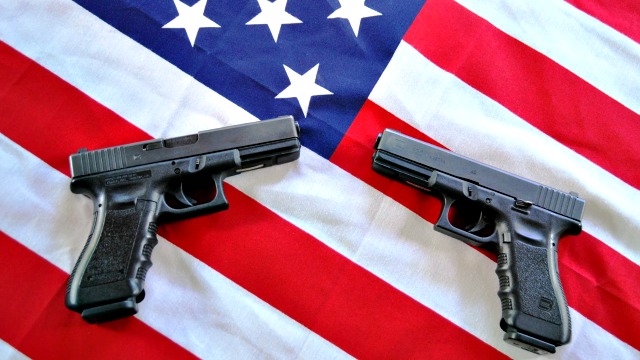The mass shooting in Roseburg, Oregon, was a horrible, tragic event. Mass shootings like that reach across the country and tear at our hearts with their senseless and brutal loss of life. They are terrifying, and there is no question that they should not be happening.
However, they are not the problem. They are certainly a problem, but when it comes to firearms deaths in this country, they are not the problem. Not even remotely.
This seems like heresy to a generation that grew up doing lockdown drills in the wake of Columbine, but the fact is that Roseburg-style shootings happen very, very rarely compared to the actual day-to-day firearms violence that takes so many lives in this country.
How can that be, when the horrors keep piling up? Roseburg, Lafayette, Fort Hood, Charleston, Virginia Tech, Sandy Hook and more—it seems clear that this is a pressing national issue.
The thing is, in terms of actual deaths per year, it isn’t. So far in 2015, arguably a very bad year already for this type of shooting, fewer than two dozen people died in Roseburg, Charleston, Lafayette, and Chattanooga, and those deaths represent only a fraction of the roughly 33,000 firearms deaths in the United States each year—nearly as many as from car accidents.
It’s important to note that the 33,000 figure includes accidents and suicides—in fact, firearms suicides are more common than firearms homicides. Nevertheless, even if we look only at homicides, the figure is still about 11,000 per year. This means the 2015 high-profile mass shootings will likely account for about one-fifth of one percent of the total firearms homicides in this country. You are literally about as likely to be killed by lightning as you are to be killed by a deranged shooter in a public place.
None of which mitigates the horror of these shootings. They are tragedies, and they should be mourned, remembered, and more importantly, discussed. They should cause us, as a nation to re-examine our social, cultural, and legal relationships to firearms.
Because those relationships need to change. 33,000 deaths a year is unconscionable. Even 11,000 deaths a year is an outrage. More Americans have been killed by firearms since 1968 than have died in wars. That’s all American wars, ever, since 1776.
Our firearms death rate—whether or not you count suicide and accidents—is literally unknown elsewhere in the developed world. 33,000 deaths a year is over ninety per day. That’s nine Roseburgs, every single day. That’s three Sandy Hooks, every single day.
Every single day.
How can we, as a nation, overlook this? Part of it is that a great deal, a grossly disproportionate deal, of the homicide victims are African-American. Despite making up only 13% percent of the population, African-Americans make up about 55% of the firearms homicide deaths. Young African-American men are killed by firearms homicide at well more than ten times the rate of young white men.
Another part of it is that we simply accept firearms violence as part of life in the United States. President Obama said that we have “become numb” to the Roseburg-style mass shootings, but we have been numb to the reality of firearms deaths in this country for decades. Case in point: people researching “mass shootings” frequently end up at the “Mass Shooting Tracker” web page, and there they learn an awful truth about firearms violence in the United States. Mass shootings—when defined as a shooting incident in which four or more people are shot, fatally or not—happen almost every day.
That’s right. Almost every day in this country someone shoots four or more people in a single incident. And we, as a nation, collectively pay almost no attention. If it happens in our community, it might make the local papers. But as of this writing, there have been at least ten shootings with four or more victims since Roseburg and none of us noticed. Just two weeks before Roseburg, six people died in Platte, South Dakota, but it didn’t make the headlines and we didn’t hold vigils around the nation.
This probably has something to do with the fact that the Platte shooter was a man who first shot his wife and children in their home before killing himself, a pattern that appears frequently in mass shootings. If that same man had walked into a restaurant with the same gun and shot five random strangers before killing himself, it would have been headline news and we would call it “the Platte shooting.” But instead, it’s “domestic violence,” which barely registers.
This is where policy and politics intersect. Roseburg-style shootings are in no way a meaningful threat to the average American. We are much, much more likely to be killed by a family member or an acquaintance than by a deranged stranger in a public place, yet those garden-variety deaths, those thirty firearms homicides a day don’t seem to faze us. Roseburg-style shootings, despite their extreme rarity, at least have the potential to move us to action. They are not the reason we need our cultural and legal relationships to firearms to change, but when those relationships change, those tragedies will be the reason why.
Edited by Joel Dishman

